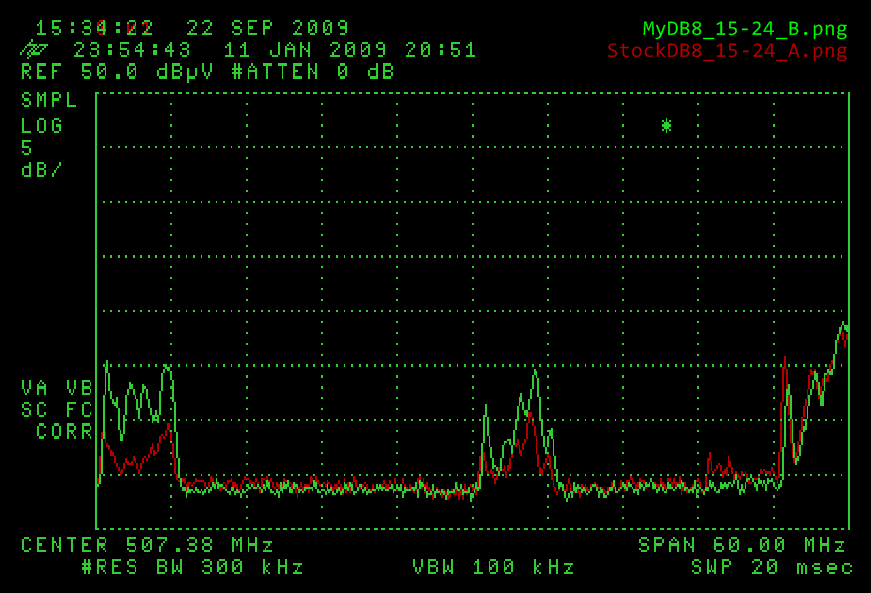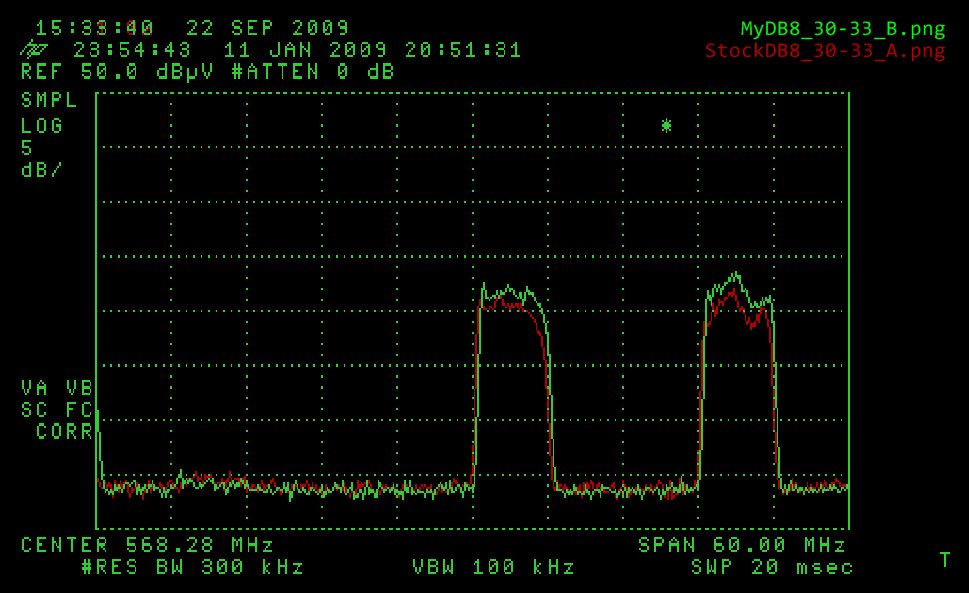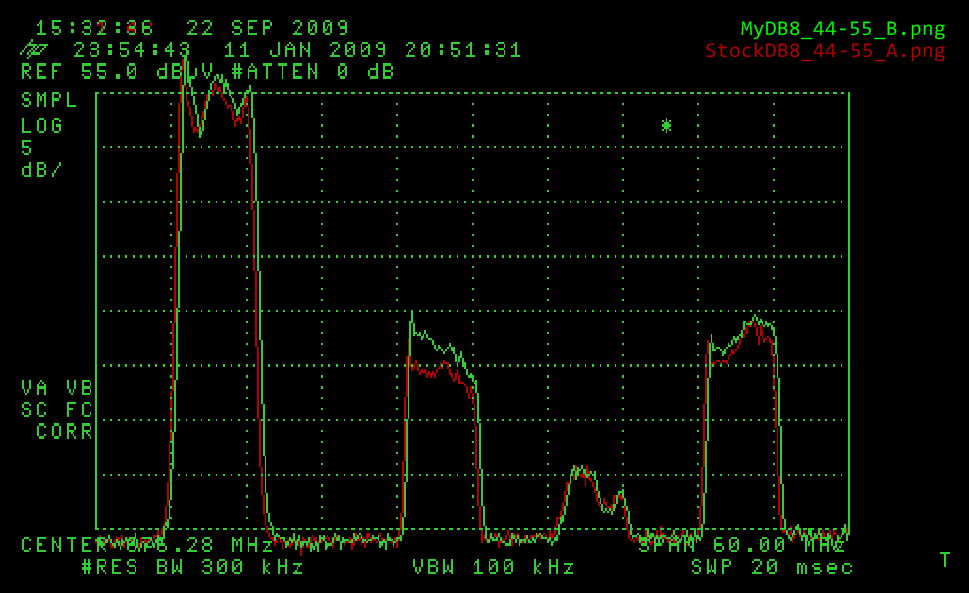Modifed DB8
Field Measurements
The following captures compare the modified unit to both a
stock unit and to a stock 91XG.
Channels 15 - 24

Channels 30 - 33

Channels 44 - 51

Note that the capture files merged into the above were incorrectly labeld 44-55. The
channels visible here are 44, 47, 49, and 51.
In spite of the poor signal levels available locally, the general 3 to 4 dB
increase in signal levels observed at the test site recur here also, especially
for channels 15, and 47.
Now, just for fun, I had to see how the unit compared to a 91XG. I did this capture at the rear peak of my home which is at a different location than where the above field measurements were taken, and at which only channel 44 is recoverable.
I will confess up front that there's a little bit of cheating going on here because in addition to taking down the 91XG and raising the modified DB8, I also extended the height by about 5', and I thnk that could easily account for 1 to 2 dB at this double knife edge and behind a pine tree location. Also, unlike the field measurements which are made back to back within about 10 minutes, there was probably an elapsed time of at least 2 hours from the capture of the 91XG before bringing it down, and the capture of the modified DB8 after it was raised.
Regardless, the result was satisfying.
Channel 44
An interesting aspect of this comparison is the relative "flatness" of the UHF 44 signal. That is, the modifed DB8 signal displays considerably less evidence of multipath.
While it is not conclusive that larger capture area antenna systems do have better immunity to multipath, mainly because the result here is influenced by the change in height and elapsed time between captures, there is also no conclusive evidence here that they do not have better immnity...